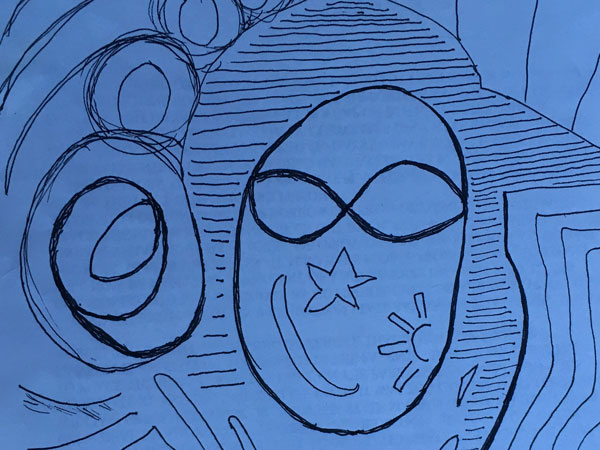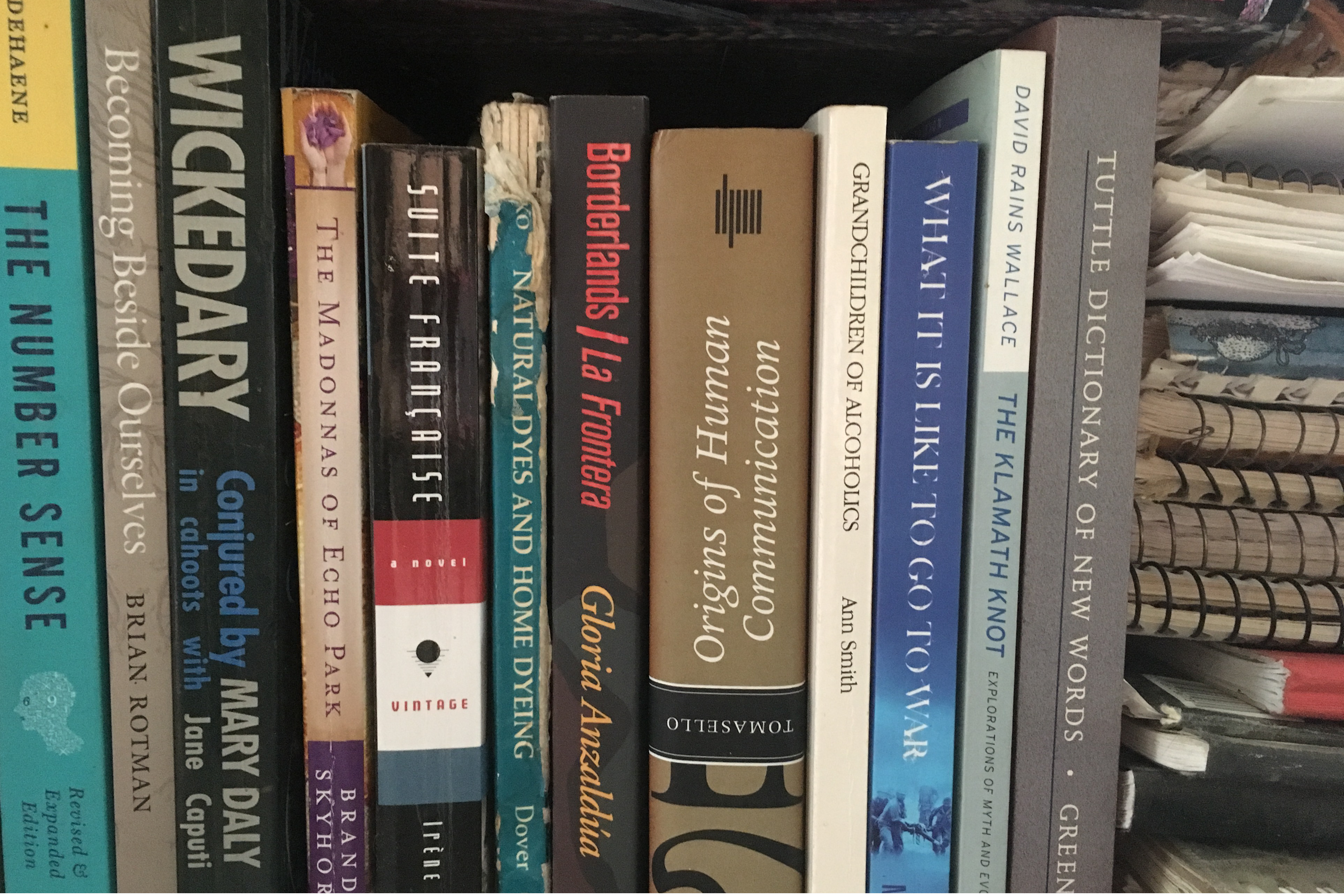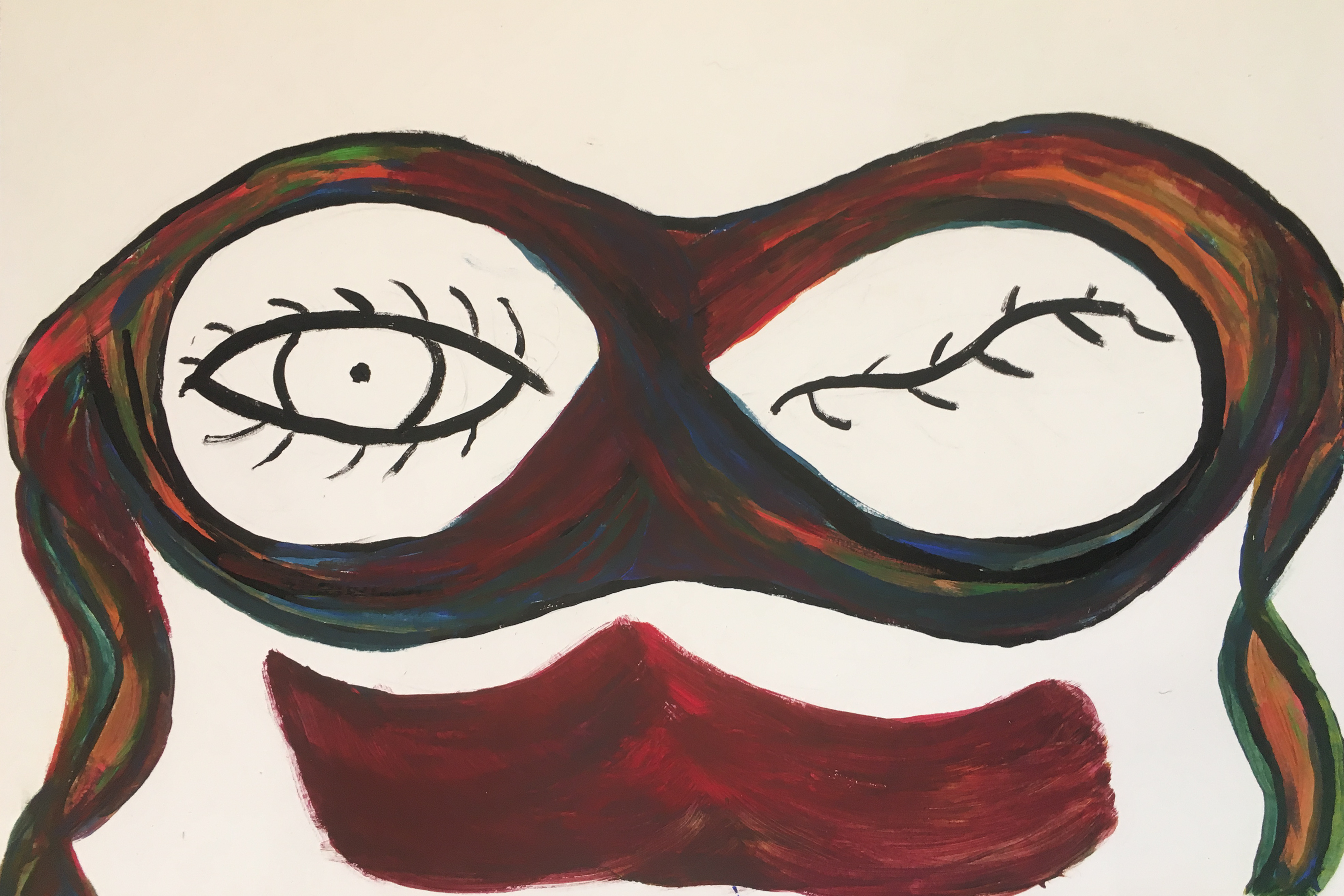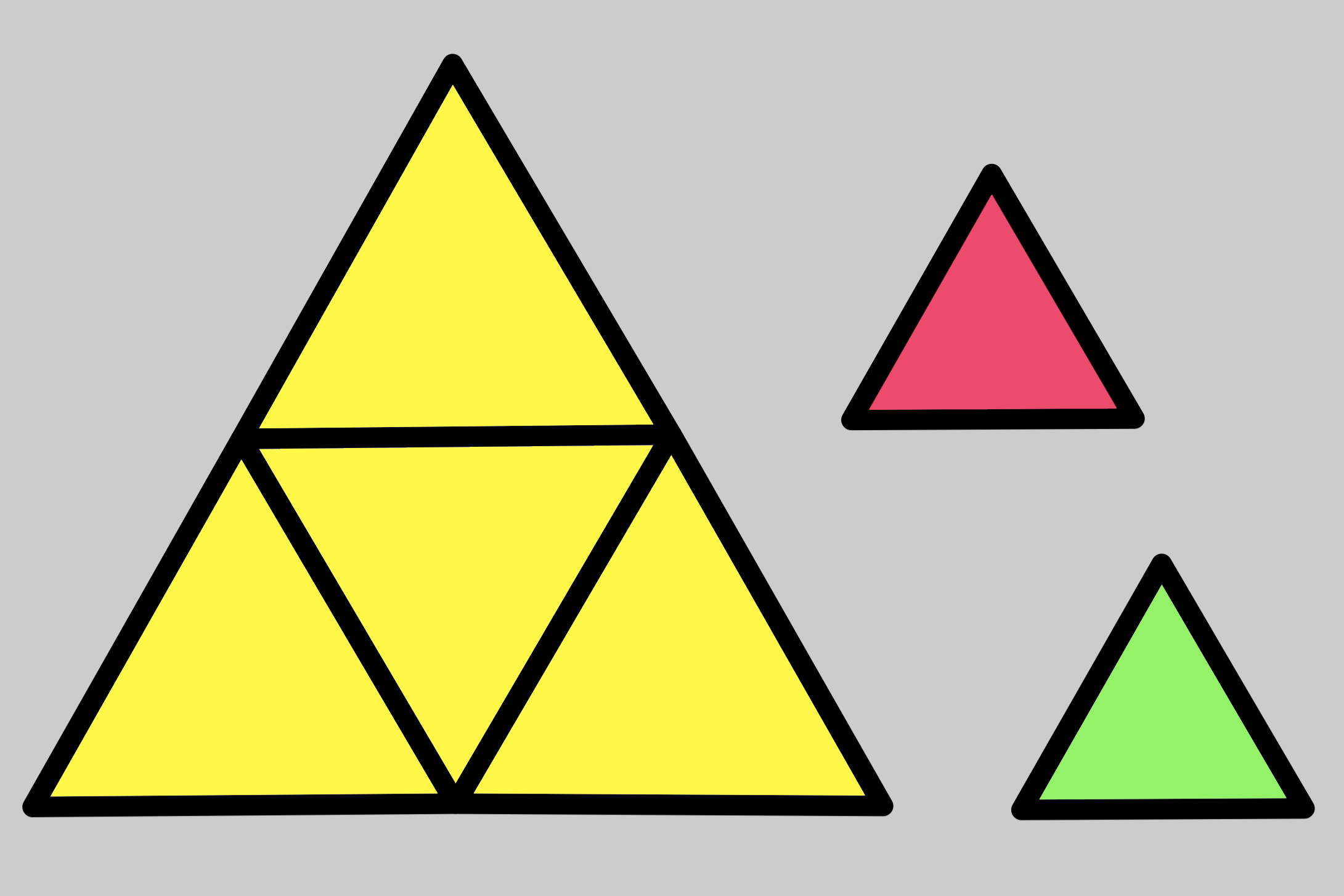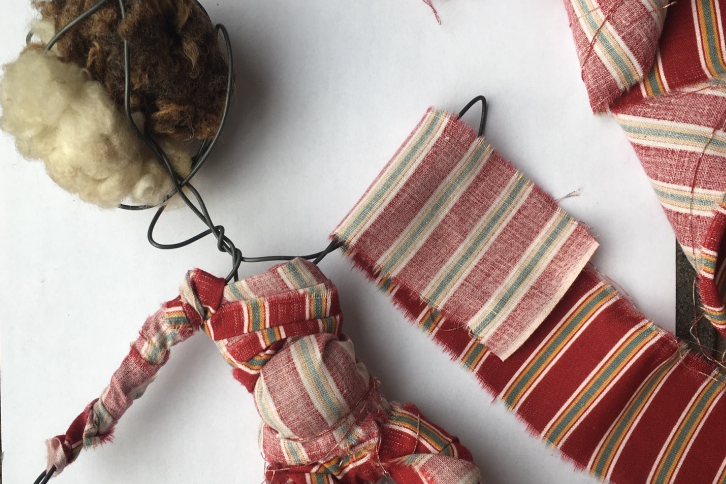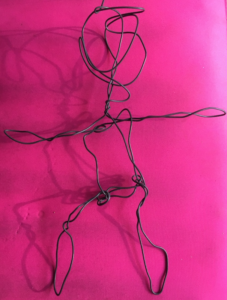 Many people think that the people who play with dolls and the people who use mathematics are two different kinds of people. If you think that way, think some more. While you are thinking, make some doll clothes.
Many people think that the people who play with dolls and the people who use mathematics are two different kinds of people. If you think that way, think some more. While you are thinking, make some doll clothes.
First, you need a doll. If you don’t have one, it’s easy to make one out of wire and rags.
Twist and bend the wire into a “skeleton” that will be inside the doll. There are at least 10,000 different ways to do this perfectly. Think about them as you go, but save the perfection for later. For the first time, just do it somehow. You can always make a second one if you want to do it better. Make limbs, head, torso—whatever your doll needs. (A tail?)
You don’t have to make a person. You can make any kind of real or imaginary creature, or anything at all, really. Anything, at least, that you would want to make clothes for.
Tear the rags into strips and wrap them round and round the wire to put “flesh” on your doll. You can add padding under the strips if you want places that are plump. Keep wrapping, adding layers until the doll has the shape that you want.
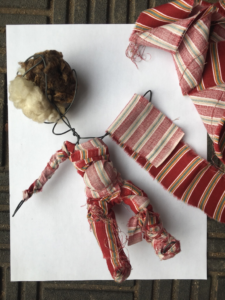
Maybe you’ll notice that you can fix some of those less-than-perfect things about the skeleton with the wrapping.
Maybe you’ll notice that most of the cloth in the wrapping is covered up, so you don’t have to pay much attention to how the doll’s skin will look until you get to the top layer.
Maybe you’ll notice that it’s hard to figure out how to wrap the strips smoothly in a way that makes a perfectly round head. (This could get you interested in the “hirsute orb” theorem.)
Fasten the wrapping any way that you can think of. Most of your work will be covered up with clothes.
For the clothes, find a piece of fabric that seems about the right size to make whatever garments you want. Maybe a skirt, a jumpsuit, shirt-and-pants, socks, a poncho or a dress.
Experiment with different ways to wrap the fabric around your doll. Lay the fabric flat on the table and look at it. Keep thinking. Figure out how to make the fabric into the clothes you want.
Turning a flat piece of fabric into clothes that fit requires several different kind of mathematical thinking.
Will you need to make holes for head, arms, or legs to poke through? Will you do that by sewing? Cutting? Some combination of both? As you visualize and plan for the openings in the garment, your thinking is in the mathematical field of topology.
When you decide where, exactly, you need to put those holes, your thinking shifts over to 3-dimensional geometry. 3-D geometry will inform all of your efforts to make the clothes fit and hang properly.
When you start thinking of ways to improve your doll or its clothes, you are thinking like an engineer. An engineer thinks about the finished product—how the doll and its wardrobe are supposed to look, who will play with it, and what kind of wear-and-tear the doll and the clothes will endure.
At the same time, an engineer will be thinking about the best materials to use and the best ways to do all the steps. Engineers go back and forth between thinking and experimenting until they come up with something that people can make and use.
The underpinning of all stylish, functional clothing? Math and engineering.


Perhaps the most complicated article of clothing a person could make is a space suit. The Wild Black Yonder is a book by Jared Leidich who led a team of engineers who did exactly that.


